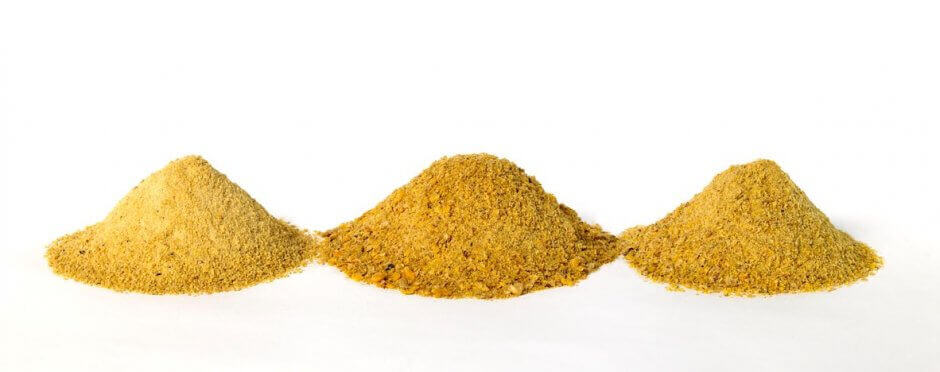Less Moisture in Ingredients is a Good Thing

I was recently discussing ingredient characteristics at a conference, and how high shear dry extruded ingredients, such as dry extruded full-fat soy and dry extruded/pressed (ExPress®) soy meals , have lower moisture than several other ingredients.
Almost as if by instinct, someone replied that we all know ingredients need to have 11-12% moisture. But, with more moisture, what happens to nutrient levels? Is this the right way to think about ingredients?
It’s instructive to look at how this works with raw grains and oilseeds. You can read about it here. Grain buyers use a base moisture content, specific for each grain, to determine what adjustments need to be made. Farmers who deliver grain with moisture contents above the base end up having their delivery amounts adjusted to account for this excess moisture. This is because, practically, the buyers have to dry the grain for storage, or blend two or more lots together to lower the moisture content.
However, if grains are delivered with moisture contents below the base, no adjustment is made (i.e., farmers are not paid more for delivering less water). What this means to the grain farmer is that delivery of grains over the base moisture content will result in them getting paid more than delivery of grains under the base moisture content (as long as everything else is equal).
This is true, even though materials that are too wet will degrade quicker, and could be tougher to convey. And, from an end-user perspective when formulating diets, more moisture takes up space that could have been occupied by nutrients.
Therefore, ingredients with less moisture need to be valued differently. I’ve written about this on the Insta-Pro blog before, using corn as an example.
It makes sense that a more nutrient-dense ingredient would have many benefits. Animals have limited capacities to consume feed each day, especially juvenile animals that require higher levels of digestible nutrients to get off to a good start. Also, if a single ingredient takes up less space in the formulation, the nutritionist has more flexibility to meet performance and economic goals of the feeding program. Finally, when shipping ingredients, it’s important to think about the amounts of usable energy and protein that are actually in each load.
So, think about moisture contents in ingredients the right way. It may be time to consider direct sales to a processor that would value lower moisture. At Insta-Pro, we help our processors turn raw materials into feed and food ingredients and employ nutritionists and market professionals who can help use these end products in the best possible ways – please reach out to us for guidance.



